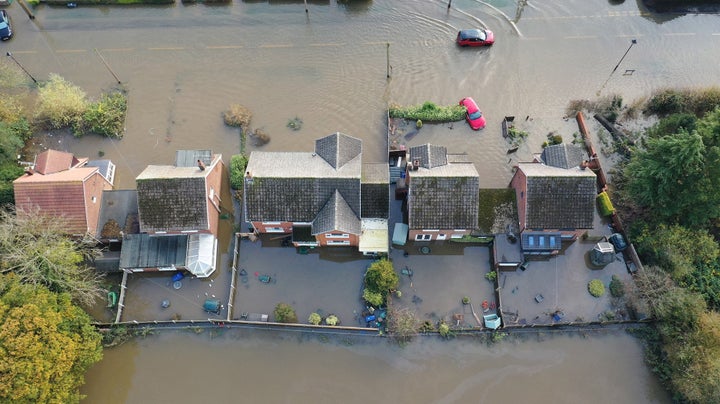Three different types of weather warnings are in place across the UK as the wild wintry conditions continue to cause chaos in parts of the country.
As the Met Office issued several alerts for ice, rain and snow across the nation, the Environment Agency (EA) sounded another warning that Britain’s flooding was far from over.
Residents of South Yorkshire and Lincolnshire are being warned to remain vigilant as more rain is expected in flood-hit areas on Thursday, PA Media reports.
“Heavy rain is expected on Thursday, Friday and over the weekend which could lead to further flooding for communities in South Yorkshire around the Lower River Don,” the EA’s flood duty manager Kate Marks said in a statement.
“Parts of Lincolnshire and the Midlands could also be affected by rain falling on already saturated ground over Thursday and Friday, as well as other parts of England as rain crosses the country from west to east.
“It’s really important that impacted communities remain vigilant and take steps to prepare for flooding by checking their flood risk regularly and making plans to stay safe.”

As the wild weather continues, the Met Office has six yellow weather warnings in effect for:
- snow in parts of south Wales and south-west England between Bath, Oxford and Worcester.
- rain further to the south-east in England, including London, and in the East Midlands.
- ice, in along eastern coastal regions of Scotland, from Kelso north to Elgin.
The EA said 300 staff were working around the clock in various parts of the country, deploying pumps to disperse water through five of the worst-hit locations.
A total of 34 flood warnings, meaning flooding is expected, remain in effect across Britain, along with 75 flood alerts, which means flooding is possible.
The EA said since flooding began last Thursday, around 14,400 properties had been protected by flood defences, including 5,000 in South Yorkshire.
A yellow weather warning for rain is in place for areas around Nottingham, Sheffield and Doncaster from 9am on Thursday, as the snow falling across the south-west moves north and turns to rain.
Met Office meteorologist Luke Miall said “the worst of the winter weather has now moved through” the south-west, but “it’s the same one that’s going to push its way north and will affect the flooded areas from last week”.
The heaviest of the rain is expected to hit the area between 9am and 10am and continue throughout the day.
Forecasters are predicting between 35mm and 45mm of rainfall, and 33 flood warnings are in place across the region after the Met Office warned there could be a risk to life “because these areas are very waterlogged already”.
The Government’s response to the flooding has spilled over into an election issue, with Prime Minister Boris Johnson facing heavy criticism during a visit to affected areas in South Yorkshire on Wednesday.
The PM later paid a visit to the badly-hit village of Fishlake, where he told reporters: “We will get people back on their feet.”
On Tuesday, Johnson announced that relief funding would be made available for those affected by the floods and said funding for local councils to help affected households would be made available to the tune of £500 per eligible household.
